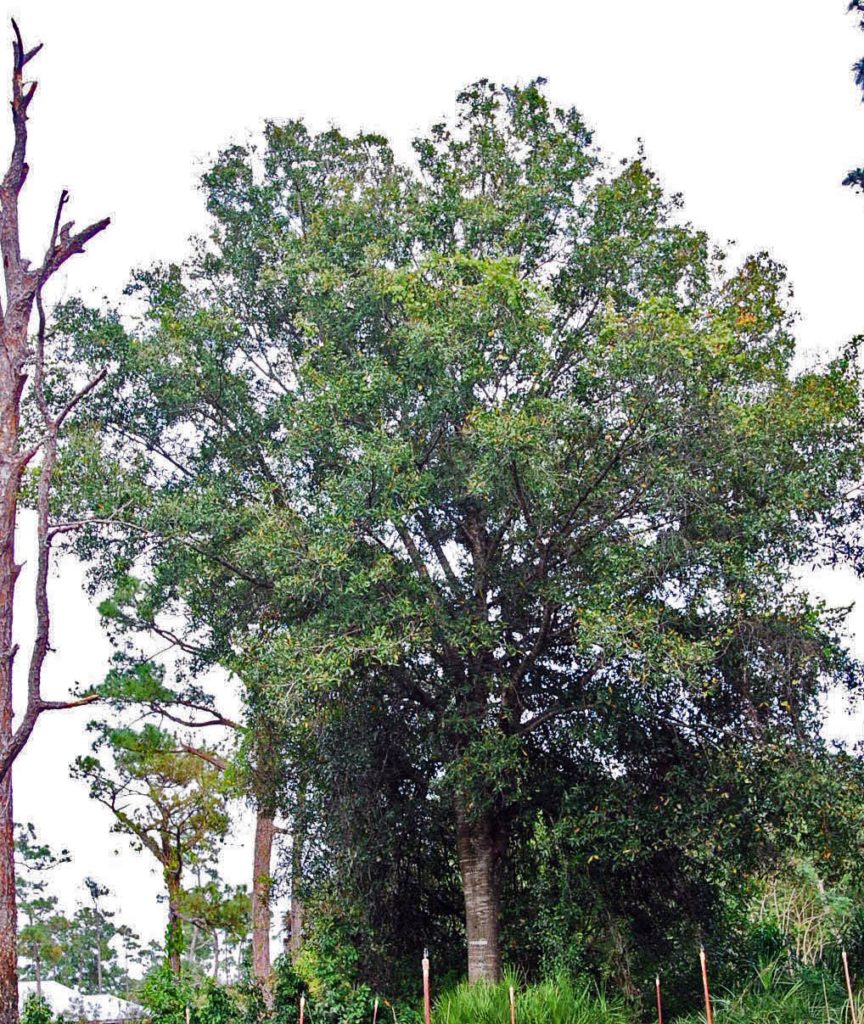
Laurel Oak
Quercus laurifolia
Laurel oak is often found on the edge of wetlands and needs a deep moist soil to look its best. It is mistakenly planted on dry berms where it often looks stressed. Laurel Oak grows fast and can reach a height of over 60 feet. Its straight trunk and smooth mottled bark give this tree a stately look yet it is said that they live for only 60 years.
The Sand Laurel Oak lives longer and grows to 115 feet tall. This is found growing in dry upland soil in Central and North Florida. Highlands Hammock State Preserve is a good place to see this similar looking oak. click for more info
Laurel Oak, also known as Swamp Laurel Oak, is a deep rooted tree that does very well in hurricanes unless it has been planted over a hardpan or other root limiting feature. Any large tree planted in the narrow spaces and shallow soil of a parking lot will fall over in high winds.
The acorns are a major food source for a variety of wildlife and the leaves are the larval food for the red banded hairstreak, Horace’s Duskywing and other butterflies.
Oak leaves and acorns are eaten by a variety of insects that are an important food source for the young of nesting birds. The branches often hide the nests of squirrels whose young become food for our hawks and owls. When looking for migratory birds in the spring and fall, just sit under an oak and you will be rewarded shortly. Tiny birds like the Warblers, Vireos, and Thrushes will appear as they move through the branches picking at insects.
Laurel oak can be used as a tall specimen in the front yard or mixed with Red Maple, Cypress, Slash Pine, live Oak, Dahoon hHolly and other wetland species in moist soil conditions. Short term flooding is OK. Make sure that the soil is deep and the roots can spread out and anchor the tree.